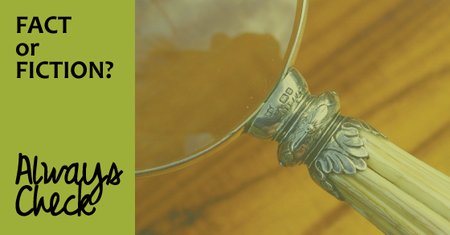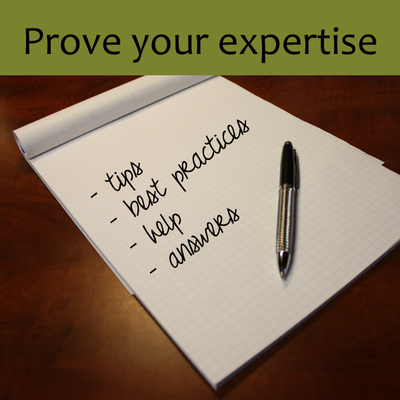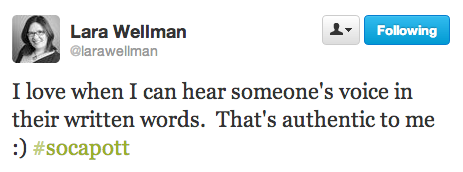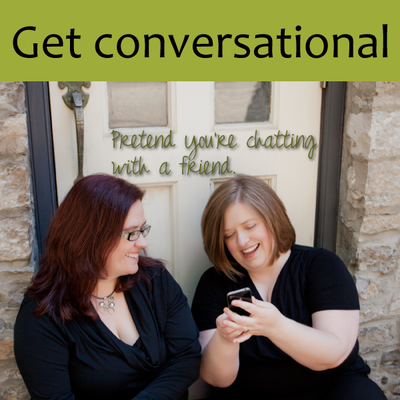 The great thing about the internet is that it has made it possible for anyone to publish content online very easily. The downside of that is that anyone can publish content online very easily - whether it’s accurate or not.
The great thing about the internet is that it has made it possible for anyone to publish content online very easily. The downside of that is that anyone can publish content online very easily - whether it’s accurate or not.
As a small business owner, it’s important to know for certain that the content you are sharing - both on your personal profiles and business page - is from reliable, verifiable sources. But if something looks genuine and seems to make sense, what are the signs that it isn’t what it appears?
I tend to be suspicious when consuming content, but here are a few things that always raise red flags for me:
1) Copy and paste content
This happens on Facebook more than anywhere else I’ve seen. Sometimes it’s status updates meant to raise awareness about a cause. Those don’t usually have any nefarious intent, but it’s quite common for there to be a surge in status updates about privacy settings. It’s also common that the advice given is at least partially - if not totally - wrong. It’s always best to check before copying and pasting a status update. Test the advice with a trusted friend who can help you see whether what it says is actually true.
Blogs that copy and paste content in posts raise huge red flags for me, particularly if the content ever showed up in my email 10 years ago when forwarding worst case scenarios to all your friends were at the height of popularity. (Did you ever get the one about Coke dissolving a T-bone?)
2) It sounds too good to be true
- “Everyone who shares this is going to get a free Starbucks gift card!”
- “Want to go on vacation here? Enter to win by sharing this photo!”
So, maybe some people don’t think that sounds appealing - I do (and I’d definitely use it for a Gingerbread Latte next week when they come out). However, I wouldn’t share this post because I know that my privacy settings would prevent Starbucks from tracking that I had shared it. I also know that it didn’t originate from an official Starbucks page. Since I’ve seen this one exclusively on Facebook (I’m sure they show up in other social networks), I also know that this kind of promotion goes against Facebook’s promotion guidelines.
It isn’t just promotions that sound too good to be true. Sometimes it’s “factual” information that is the reverse of everything we’ve all been taught for our entire lives. Recently, I saw this in a post about earthquake safety that claims the widely accepted earthquake safety tips are not reliable based on a single study. One thing that triggered my suspicions was the intro of the post that indicated the post had been copied and pasted on the individual’s blog.
3) A miracle drug/cure that is being covered up
Many of these posts have a decidedly conspiracy theory feel to them. One such story recently lead me to look into the connection between MS and Diet Coke/aspartame. There’s no doubt that Aspartame is a controversial substance and opinions vary widely about its safety. However, the myth that MS is caused by aspartame (specifically Diet Coke) has been well and truly busted.
4) The context is all wrong
Going back to the earthquake example, this post was published on a blog that is written by a medium, and the focus of the content is typically around psychics and mediums. The earthquake post stuck out because it didn’t fit in with the topic of the blog, not to mention that the writer lives in the Midwest U.S. which is plagued far more with tornadoes than earthquakes.
How do you confirm that a piece is fact and not fiction?
Sometimes I immediately dismiss something, because it’s just not something I find valuable enough to share. However, to be considered truly helpful, you want to share information that is verifiable by more than one reliable and trusted source.
In the case of copy/paste information, use copy/paste to your advantage and do a search. (In fact, search is your best friend regardless of which red flag is raised.) If there are hoax busting sites in the first page of results, review what they have to say. Snopes is one of the most well-known. I usually go there first, but there are others that are very good as well.
Why is this important?
Not everyone on the Internet will fact-check before sharing. Perhaps they are busy and forget. Perhaps a piece hasn’t raised any red flags for them. Perhaps they don’t know how. There are many reasons.
Misinformation can lead to vulnerabilities. Despite what some parents and teachers say, some people still believe a lot of what they read online and other places. When misinformation about safety practices are shared, this can make someone else vulnerable.
Thoughtful sharing bolsters your reputation. If you are sharing content that demonstrates your expertise, it doesn’t take much to hurt that reputation. Though we all make mistakes, if becoming an expert in your field is a goal fact-check everything you share especially if it is relevant to your audience but outside your area of expertise.






